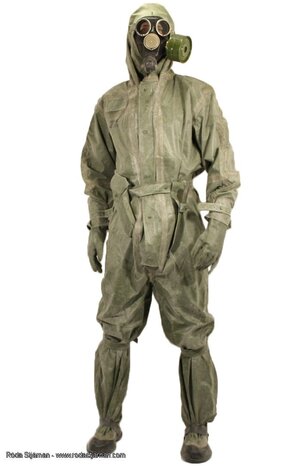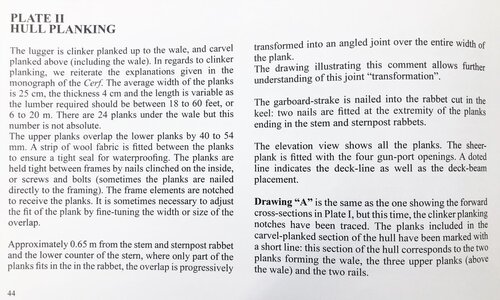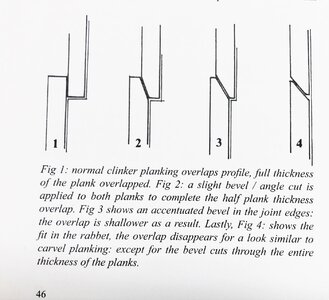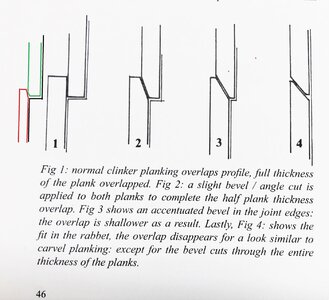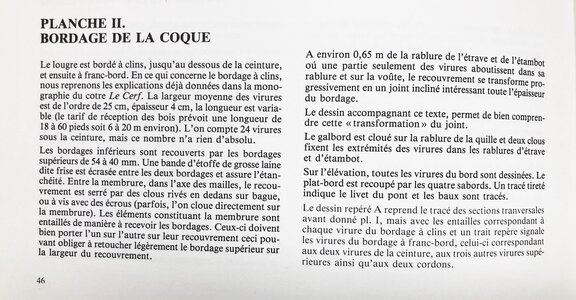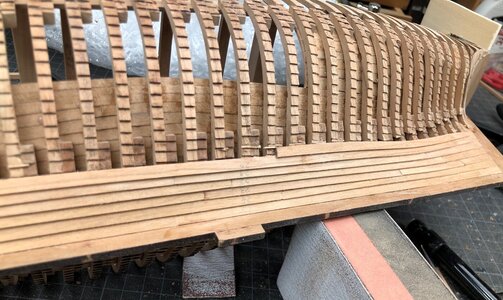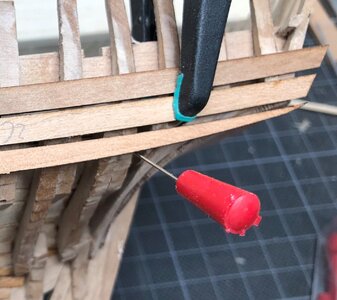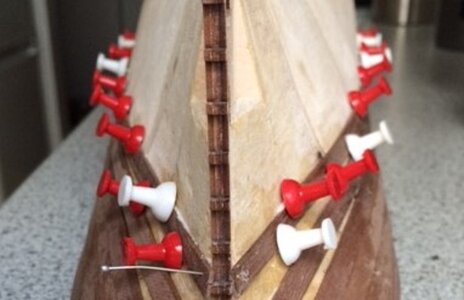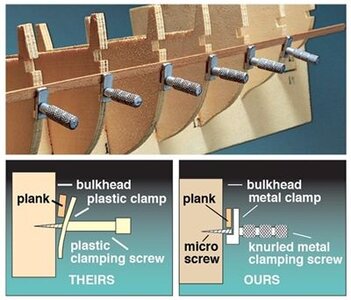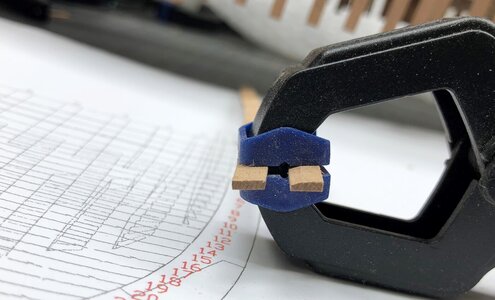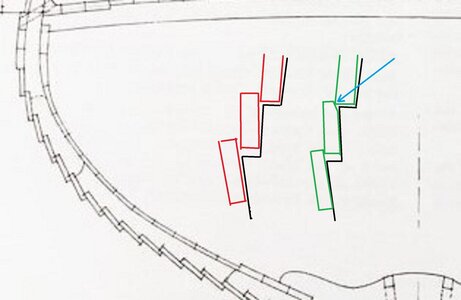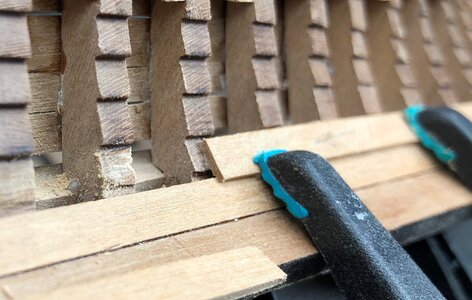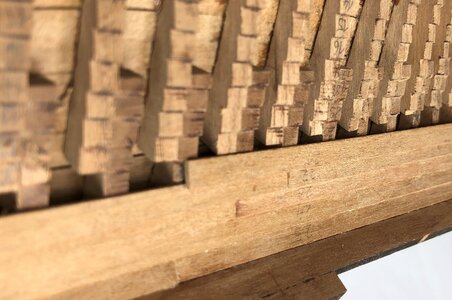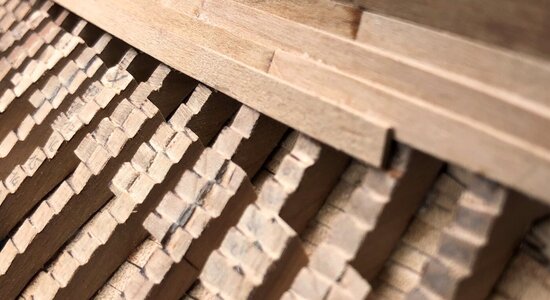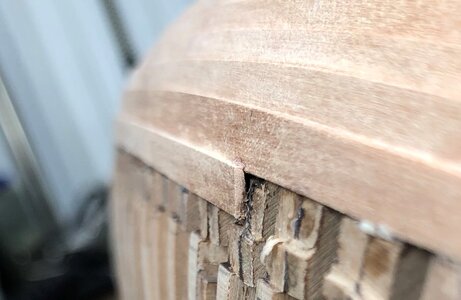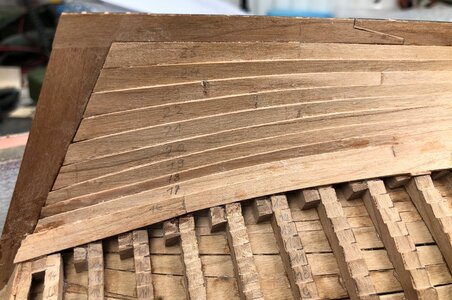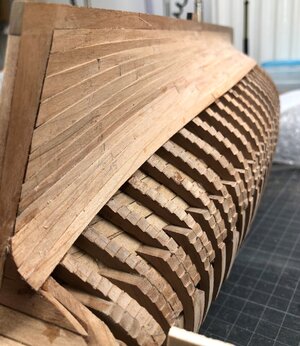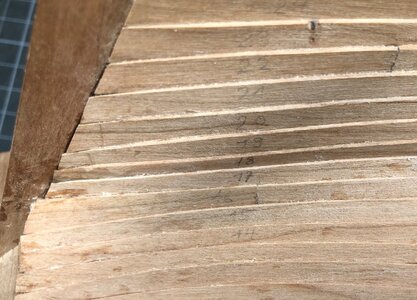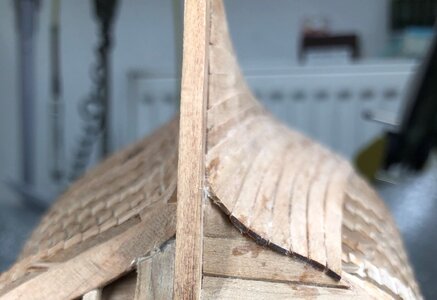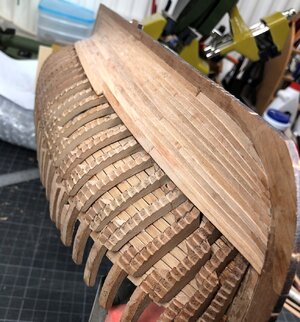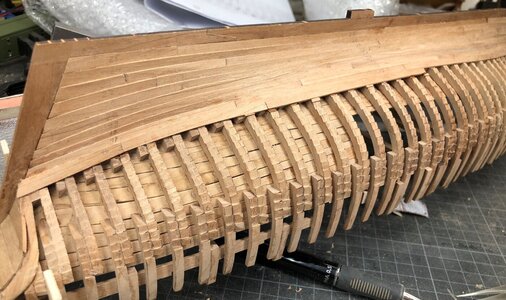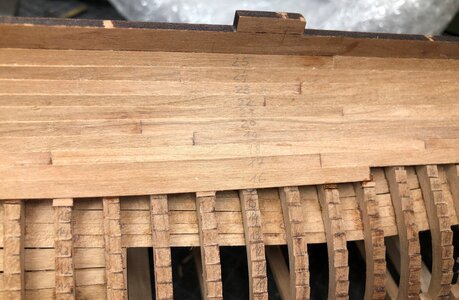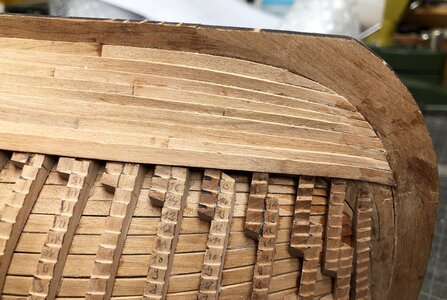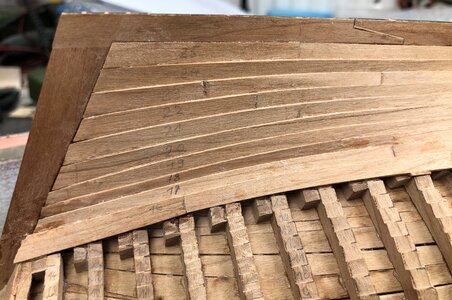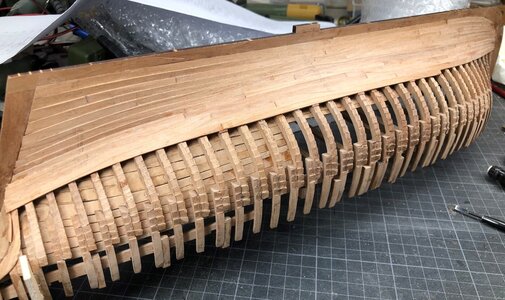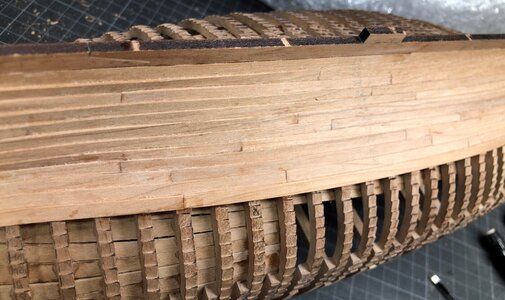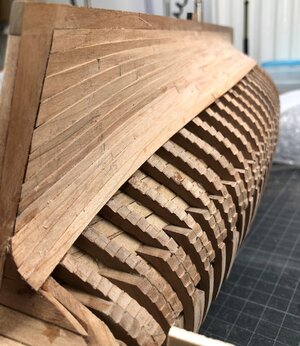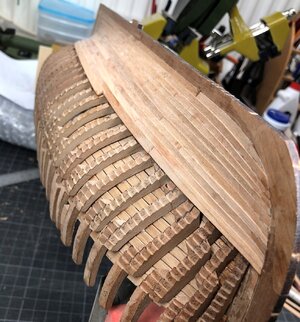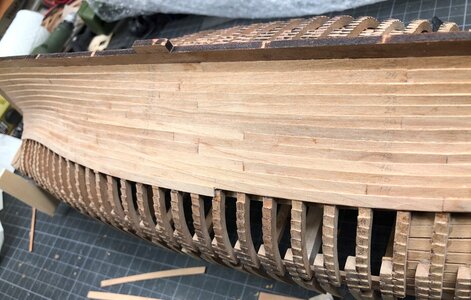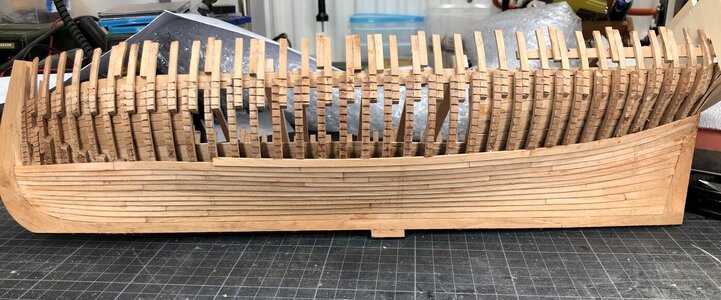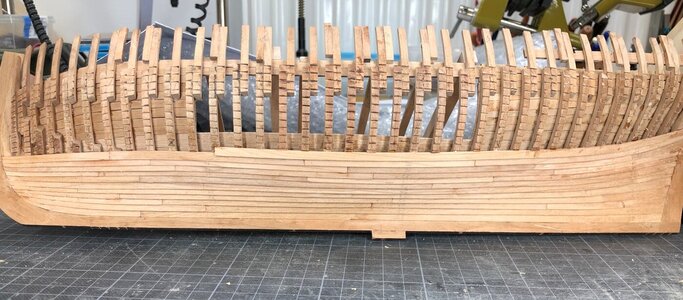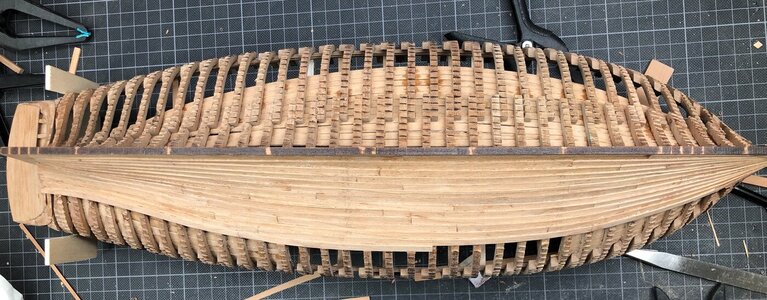@PoulD :
Do you mean you are beveling the planks along the whole lenght of the ship?
- YES
Doesn't that create some air space between the lower and the upper plank?:
- Maybe slightly on some smaller areas, but we are talking about micrometer - the same you have because of general inaccuracy of the modeler. In addition I try to make a very thin line of wood glue along the contact area of the two planks
Or are you reducing the height of the steps on the frames?
Not reducing, some adjustments of the depth are necessary, but more because of the small differences from frame to frame. I adjust the steps on the frames, so that the plank is laying smooth on the frames along the length of the plank
Additional info:
Very often the steps have less depth than the thickness of the plank (like shown on the left side in red)
So partly I deepen the step with a chisel and also I make the beveling the planks along the length (like at the middle green plank) - The main reason for this beveling is the fact, that a thinner plank (this part which is visible) fits better to the scale of the model!!!
Boudriot is writing, that the planks were only 4cm thick -> this is in scale 1:48 only 0,8mm !!! so thinner, than the planking material we have
View attachment 205122
Here in the following also some excerpts from photos showing partly the ends of planks at butt joints which makes it hopefully more clear
View attachment 205124
View attachment 205125
View attachment 205126
View attachment 205127
Final summary:
At the end, every single plank element from the kit needs special treatment to get a good final result. The clinker planking needs everywhere some small adjustments to get a correct result. One plank element is passing and laying on top of maybe 10 or even 15 frames
But this is necessary, because no modeler will be able to make every single frame 100% correct, the height and alignment of every single frame on top of the keel by 100%, or also the steps on the frames - here some small errors or inaccuracies of the modeler (means myself) are multiplied
-> therefore every single part has to be checked, adjusted, sanded individually !!!! This means also, that I need per planking row (three or four parts) easily 3 to 5 hours, this means also per side of the hull it could be appr. 100 hours of fun making work !

